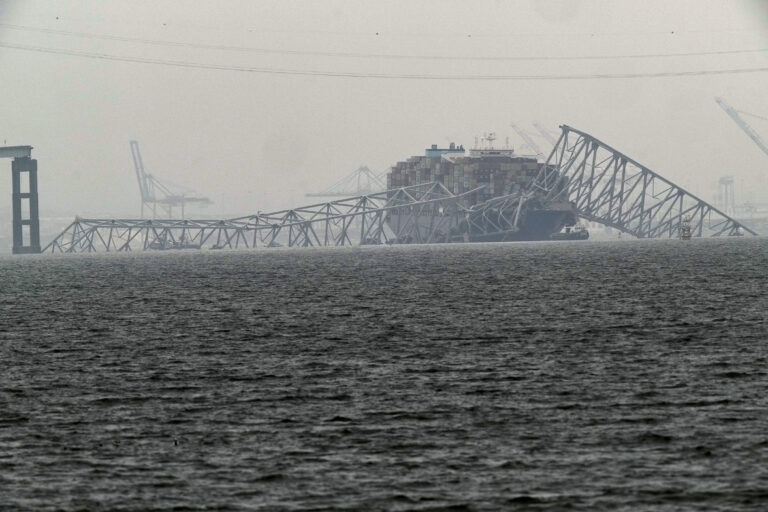BALTIMORE — Investigators working to pinpoint the cause of Baltimore’s Francis Scott Key Bridge collapse discovered a loose cable that could have caused electrical issues on the Dali, the massive cargo ship that lost power and disastrously veered off course before striking the bridge.
When disconnected, the problematic cable triggered an electrical blackout on the ship similar to what happened as it approached the bridge on March 26, according to new documents released Wednesday by the National Transportation Safety Board.
The documents don’t include any analysis or conclusions, which will be released later in the board’s final report. A spokesperson for the board declined to comment as the investigation is ongoing.
The Dali was leaving Baltimore bound for Sri Lanka when its steering failed because of the power loss. It crashed into one of the bridge’s supporting columns, destroying the 1.6-mile span and killing six members of a roadwork crew.
Safety investigators released a preliminary report earlier this year that documented a series of power issues on the ship before and after its departure from Baltimore. But the new records offer more details about how its electrical system may have failed in the critical moments leading up to the deadly disaster.
The Dali first experienced a power outage when it was still docked in Baltimore. That was after a crew member mistakenly closed an exhaust damper while conducting maintenance, causing one of the ship’s diesel engines to stall, according to the earlier report. Crew members then made changes to the ship’s electrical configuration, switching from one transformer and breaker system — which had been in use for several months — to a second that was active upon its departure.
That second transformer and breaker system is where investigators found the loose cable, according to investigative reports.
Investigators also removed an electrical component from the same system for additional testing, according to a supplemental report released in June. They removed what is called a terminal block, which is used to connect electrical wires.
Engineers from Hyundai, the manufacturer of the ship’s electrical system, said the loose cable could create an open circuit and cause a breaker to open, according to a 41-page report detailing tests completed on the Dali in the weeks after the collapse. The engineers disconnected the cable as part of a simulation, which resulted in a blackout on the ship.
Hyundai sent engineers from its headquarters in South Korea to help with the investigation in April.
The new documents also included various certificates issued after inspections of the Dali pertaining to its general condition and compliance with maritime safety regulations.
“It’s pretty clear that they think they’ve found an issue that could cause a blackout,” said Tom Roth-Roffy, a former National Transportation Safety Board investigator who focused on maritime investigations. He said the loose cable was in a critical place within the electrical system.
He also noted that investigators have clearly taken a thorough approach and documented their findings well. The new documents suggest they found very few other problems as they combed through the various systems and machinery aboard the Dali.
In terms of whether the loose connection suggests inadequate maintenance of the ship or other problems with the crew, Roth-Roffy said it seems like a toss-up. Checking hundreds or thousands of wires is a tedious and time-consuming process, he said, and there are any number of factors that could cause connections to loosen over time, including the constant vibrations on a ship.
“To say that this should have been detected is probably true but somewhat unrealistic,” he said. “But the ship’s crew has ultimate responsibility for the proper maintenance and operation of the ship.”
The Dali left Baltimore for Virginia in late June. It was scheduled to undergo repairs there, and local media reported last week that it will sail to China, likely sometime later this month.
The Associated Press is an independent global news organization dedicated to factual reporting. Founded in 1846, AP today remains the most trusted source of fast, accurate, unbiased news in all formats and the essential provider of the technology and services vital to the news business. The Trucker Media Group is subscriber of The Associated Press has been granted the license to use this content on TheTrucker.com and The Trucker newspaper in accordance with its Content License Agreement with The Associated Press.





